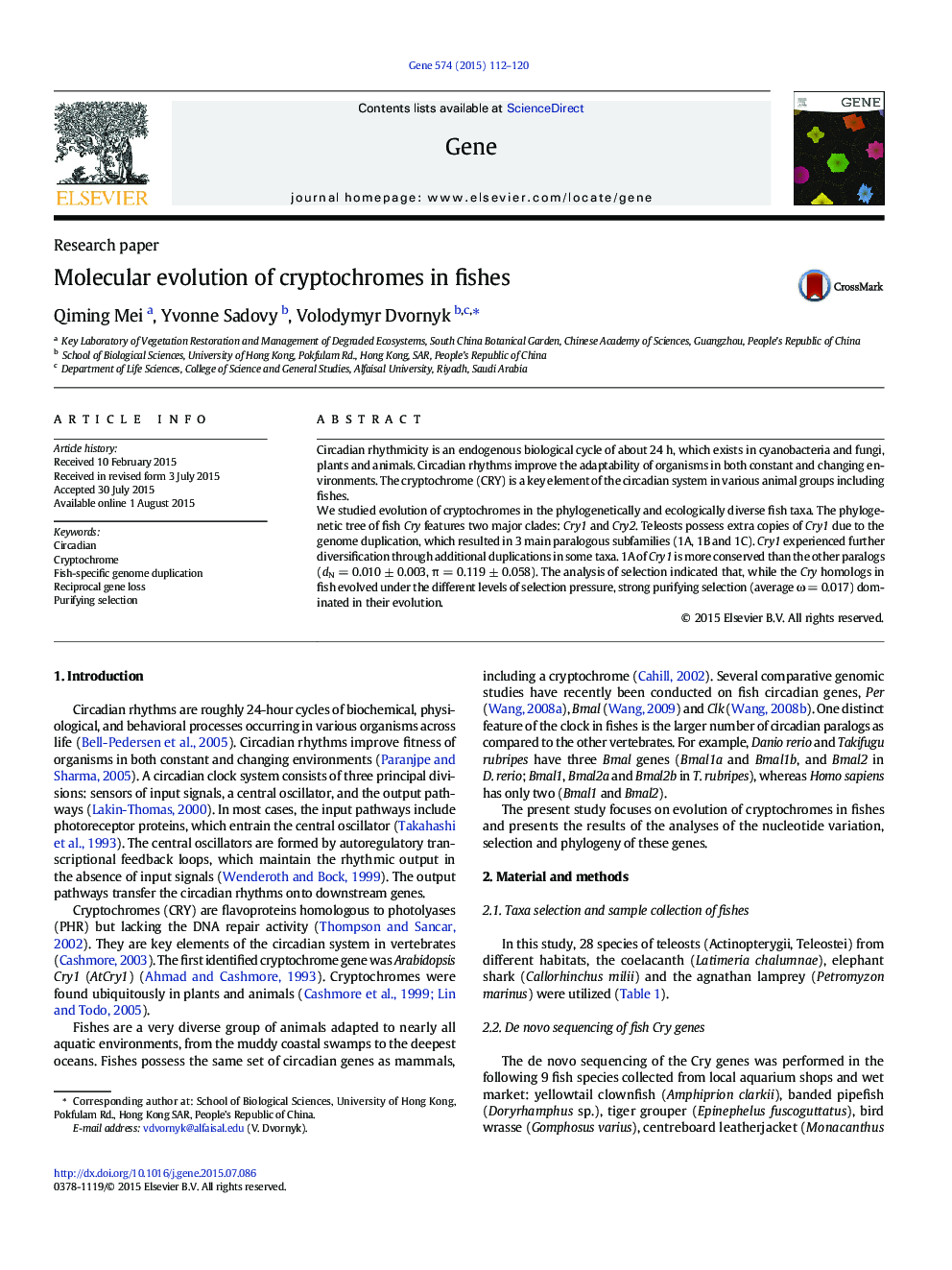| Article ID | Journal | Published Year | Pages | File Type |
|---|---|---|---|---|
| 2815387 | Gene | 2015 | 9 Pages |
•We performed a comprehensive evolutionary analysis on fish CRYs using the extensive genomic data and de novo sequencing.•Teleost CRYs evolve under strong purifying selection.•Type I and type II functional divergence occurred between paralogs of cryptochromes in teleosts.•We identified an Otophysi-specific genome duplication.
Circadian rhythmicity is an endogenous biological cycle of about 24 h, which exists in cyanobacteria and fungi, plants and animals. Circadian rhythms improve the adaptability of organisms in both constant and changing environments. The cryptochrome (CRY) is a key element of the circadian system in various animal groups including fishes.We studied evolution of cryptochromes in the phylogenetically and ecologically diverse fish taxa. The phylogenetic tree of fish Cry features two major clades: Cry1 and Cry2. Teleosts possess extra copies of Cry1 due to the genome duplication, which resulted in 3 main paralogous subfamilies (1A, 1B and 1C). Cry1 experienced further diversification through additional duplications in some taxa. 1A of Cry1 is more conserved than the other paralogs (dN = 0.010 ± 0.003, π = 0.119 ± 0.058). The analysis of selection indicated that, while the Cry homologs in fish evolved under the different levels of selection pressure, strong purifying selection (average ω = 0.017) dominated in their evolution.
